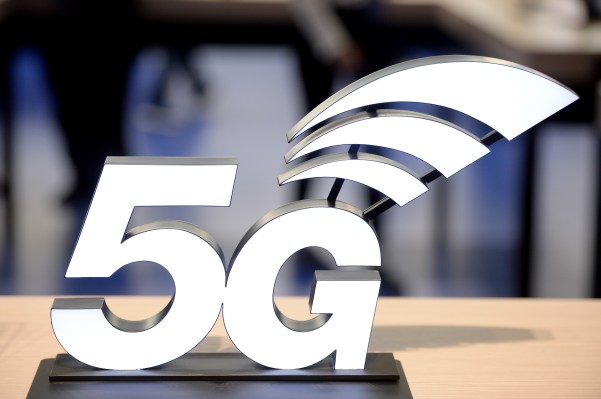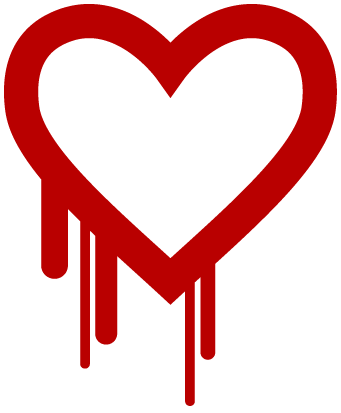Music
Trailers
DailyVideos
India
Pakistan
Afghanistan
Bangladesh
Srilanka
Nepal
Thailand
Iraq
Iran
Russia
Brazil
StockMarket
Business
CryptoCurrency
Technology
Startup
Trending Videos
Coupons
Football
Search
Download App in Playstore
Download App
Best Collections
Technology

No surprise, really, that 5G smartphone sales are on the way up. Frankly, therereally no other way to go, according to the latest numbers from NPDMobile Phone Tracking. The firm noted that 5G handsets accounted for less than 1% of total sales in the U.S.
The hurdles are also what you&d expect: namely, pricing and the lack of 5G availability. Therealso the fact that for much of 2019, there simply weren&t that many phones to purchase. When the devices did start arriving from companies like LG, Samsung and OnePlus, the numbers started trending upward, with an increase of roughly 9x from the first to the second half of the year.
Awareness, too, increased notably. Some nine in 10 surveyed consumers in the U.S. had some familiarity with 5G in the second half of the year, up from 73% in the first half. Meanwhile, 65% expressed &interest& in purchasing the tech. How that translates to actual sales, however, is another question entirely.
That should improve as the price of manufacturing these devices comes down, thanks to lower-cost components from companies like Qualcomm. And in markets like the U.S., 5G coverage will be greatly expanded by yearend, making it a much more appealing purchase. And, of course, never underestimate the impact of Applefirst 5G iPhone.
Smartphone manufacturers have very much been banking on the increased interest in 5G to help correct the larger trend of flagging sales.
Of course, it remains to be seen how COVID-19 will impact sales. It seems safe to assume that, like every aspect of our lives, there will be a notable impact on the number of people buying expensive smartphones. Certainly things like smartphone purchases tend to lessen in importance in the face of something like a global pandemic.
- Details
- Category: Technology Today
Read more: 5G devices were less than 1% of US smartphone purchases in 2019
Write comment (98 Comments)
Verizon said Thursday it will boost investment in network infrastructure, increasing its capital guidance by $500 million, to prepare for the rise in telecommuting and online learning amid the coronavirus outbreak.
Verizon has not seen any measurable increases in data usage, even as some business, schools and other organizations are asking its employees to work remotely, Chairman and CEO Hans Vestberg told CNBC in an interview. He added that the company is monitoring it 24/7 because &patterns can change.& (TechCrunch is owned by Verizon.)
Still, the company is increasing its capital guidance from $17 billion-$18 billion to $17.5 billion-$18.5 billion in 2020. Vestberg said the company would continue to add to its network infrastructure. Verizon said in a statement that the effort aims to accelerate the companytransition to 5G and help support the economy during this period of disruption.
&In these times, itimportant to show the market and the country that there are people investing as well,& he added in the CNBC interview.
Verizon said in a statement that it has been closely monitoring network usage in the most impacted areas and will work with and prioritize network demand to assist needs of U.S. hospitals, first responders and government agencies.
The decision follows an escalating global crisis caused by COVID-19, the coronavirus strain that was declared a pandemic by theWorld Health Organization earlier this week. COVID-19 has wreaked havoc on the stock market, pushing shares lower in every industry, and caused numerous closures, including professional sports games, the cancellation of the NCAA March Madness basketball tournament and Disneyland. Shares of Verizon closed down 3.65%, at $51.20.
- Details
- Category: Technology Today
Read more: Verizon increases network infrastructure investment by $500M
Write comment (96 Comments)
If thereone thing certain during a pandemic, itthat hackers will use it for their own gain.
Don&t be too surprised. Every time therea major news story, a world event or even regular national events like tax preparation season, hackers jump at the chance to take advantage of the uptick in chatter to launch attacks against unsuspecting victims.
As it turns out, the COVID-19 pandemic isn&t any different.
Several cybersecurity firms are reporting an uptick in attacks against a range of targets, all using the ongoing COVID-19 pandemic as a hook to hoodwink their victims into running malware. It comes as large portions of the globe are on lockdown amid the outbreak of the coronavirus strain. The World Health Organization said as of Thursdaysituation report that the coronavirus has resulted in 125,000 confirmed cases and 4,613 deaths.
FireEye said it has seen an uptick in targeted spearphishing campaigns from hackers in China, North Korea and Russia, to deliver malware. Ben Read, a senior manager in FireEyeintelligence analysis unit, said all of the campaigns it has witnessed have leveraged the coronavirus as a lure to compromise their victims& computers.
Recorded Future has also observed a number of cybercriminals using the coronavirus to spread a number of different types of malware against targets in the U.S., Europe and and Iran — three areas most affected by the COVID-19 outbreak outside of China, where the new coronavirus strain first emerged. The researchers found that some of these campaigns imitate &trusted& organizations like the World Health Organization and the U.S Centers for Disease Control and Prevention to infect their victims.
And Check Point, which last month found a number of coronavirus-themed disinformation campaigns, now says it has found a new malware campaign leveraging the fear of the outbreak to surreptitiously install a powerful remote access trojan designed to take full control of a victimcomputer.
But researchers say that attackers aren&t just using the coronavirus as a cover for spreading malware.
Email security firm Agari told TechCrunch that it has evidence of what appears to be the first case of a coronavirus-themed business email compromise attack, designed to trick businesses into turning over money.
While Agari said it has seen several coronavirus-related emails used to deliver spam, steal credentials and infect victims with malware, the company said it has seen a threat group it calls Ancient Tortoise using spoofed emails in an effort to trick a victim companycustomers to pay an outstanding balance but to a different bank than usual, &due to the coronavirus outbreak.& The different bank is a mule account based in Hong Kong, said Agari researchers.
As governments and companies scramble to contain the pandemic, security researchers are trying to better understand and detect the current spike in malware. And as long as the threat from the coronavirus remains, so will the risk from hackers.
- Details
- Category: Technology Today
Read more: Hackers are jumping on the COVID-19 pandemic to spread malware
Write comment (90 Comments)Censorship takes many forms, but even the most restrictive countries can&t block every single path for information they&d rather not get in (or out). Reporters Without Borders has identified a surprising new platform for hosting banned content: Minecraft.
The organization, collaborating with reporters, Minecraft pros and, of course, a creative agency, has produced an enormous in-game &Uncensored Library& that hosts a variety of suppressed reportage from places like like Saudi Arabia, Russia and Vietnam.
The structure is a giant neo-classical complex hosted on its own server, which Minecraft players can access freely by pointing their game toward &visit.uncensoredlibrary.com& in the server browser.
The library has a handful of wings, each dedicated to a different country, and each with a series of articles banned in those places, or their authors chased out or even killed. They&re presented in plain text inside Minecraftcraftable books — not exactly the easiest way to take in these important essays and reports, but better than nothing.

There are documents from Nguyen Van Dai in Vietnam, Mada Masr in Egypt, Javier Valdez in Mexico, Alexander Skobov in Russia and arguably the most high-profile casualty to murderous, oppressive regimes in recent history, Jamal Khashoggi in Saudi Arabia. There are only a handful of recent articles at present, but there are also numerous documents describing the state of press freedom and oppression in 180 countries — the RSF Freedom Index.
Of course, this is not secure and private like an end-to-end encrypted chat group. A user accessing the library map might have their nickname, tied to a Minecraft account, be visible to other users, and their logs would reflect the visit. It seems unlikely Microsoft would give up that information to a curious government, but there is a certain risk involved. Fortunately, private duplicate servers can be and are already being established, as well as local copies.
As it stands, the Uncensored Library stands more as a proof of concept that information need not be delivered by traditional means in order to have a potential impact. Minecraft is one of the most popular games in the world, and can be used as an informational and promotional platform as well as just a fun place to hang out and build stuff. What other ways exist to get around the restrictions of governments that would rather their citizens not know the truth?
- Details
- Category: Technology Today
Read more: Reporters Without Borders uses Minecraft to sneak censored works across borders
Write comment (95 Comments)Stay with me here. As we enter the full throes of coronavirus spread in the U.S., itbecoming incredibly evident that we cannot depend on the federal apparatus to clearly communicate any of the necessary information citizens need. From the CDC removing exact testing numbers from its site to the president saying it would just &go away& to the White House attempting to make information about the virus briefings classified.
Meanwhile, everyone is trying to determine what the right level of panic is. Fear is a healthy response to danger and it helps the body get ready to fight by raising adrenaline levels and heightening awareness so that we can take in new information about our situation and process it faster.
Too much fear without the proper information, though, and the mind goes blank. I went to the store last night and the toilet paper aisle was completely bare…but the dry goods aisle was fully stocked.
The kind of hive-driven thinking that puts fear of a dirty ass ahead of starvation is exactly the problem that clear communication would address.
This would allow informed urgency to take the place of panic or complacency.
Now, more than ever, we need a crisply defined set of messaging and information about the coronavirus& capabilities, spread, effects, treatment and mitigation methods. And I&m beginning to wonder whether we might take a cue from the way that cybersecurity vulnerabilities are handled now.
There have been &famous& worms and viruses in the computer world in the past, hell even the Morris worm had a name. But in the modern era, the OpenSSL security bug Heartbleed was one of the first to be branded and defined so thoroughly and so quickly. 
It had a name, a memorable logo, it had a simple, clear website that outlined the causes and possible remedies for the vulnerability which could have led to a massive breakdown in the security and stability of the internet.
What does the coronavirus have? Confusion about the coronavirus being the carrier and COVID-19 being the disease and how to use each of those in the proper context.
Instead of some central, clear resource, the teens are turning to meme accounts to try to figure out what the hell is going on. Which again brings up the way that information is spread on the internet today. Virality is about multi-modal comms. A meme works across Instagram and Twitter and TikTok and Snap and the web. So you need to provide something that is instantly recognizable across those platforms as a single origin source of quality — thata brand.
We know the prime faults at play here, the gutting of the CDC, a politicized viral mitigation process and subsequent massive delays in testing.
But we&ve had time to make our own way.
We&ve known that a coronavirus pandemic is possible and even expected. Bill Gates warned attendees of a conference held by the Massachusetts Medical Society and the New England Journal of Medicine of the dangers of a pandemic in 2018 and the need to prepare ourselves as if we were going to war. The Gates Foundation and Johns Hopkins even ran an extensive simulation of a very similar kind of zoonotic coronavirus to the one thatwe&re experiencing today.
The conclusion of that simulation, by the way, was something like 65 million deaths over 18 months. The virus in the suddenly very popular Matt Damon vehicle Contagion only killed 26 million people.
The signs are all over that we need to find a way to punch through the communication failures and misinformation storm to craft a unified messaging platform that gets across the base nature of the virus and the ramifications if we don&t do something about it.
The most effective piece of branding I&ve seen on the coronavirus and COVID-19 so far is a chart that shows, in graphic form, what the cost of not flattening the curve of contagion looks like. It has since been shared, remastered by publications and even turned into a gif.
Sadly, itthe closest thing we have to a high-impact, clarity-driven call to action in this thing so far.
There are also some other attempts, like a 17-year-old Seattle studentlive updated website with current statistics. And, of course, the excellent Johns Hopkins case-tracking dashboard. And yes, we&re running a COVID-19 info page to help you understand what it means for your business.
But what we really need now is a set of reference works that help people identify, understand and follow along with quality information and direction on the coronavirus. I&m honestly not sure how to maintain it, or who should shepherd it (beyond not the CDC at this point), but states are one possible steward of this kind of brand. If state surgeons general banded together with a solid product and branding team I think it could end up making a real difference in the recognition of reliable sources of information about the virus.
Or, we could just keep up the ad hoc approach and get it from whatever random tweet we see next. Either or.
- Details
- Category: Technology Today
Read more: Does coronavirus need a brand
Write comment (96 Comments)
Well, that was terrible.
During the daywild trading session, the Dow Jones Industrial Average (DJIA) dropped by just under 10% in what was the largest single-day percentage decline since the stock market crash in 1987 (when markets were sufficiently scarred to institute failsafe measures for the future, to prevent similar, shocking declines).
Investors shrugged off news that the Federal Reserve was stepping in to offer nearly $1.5 trillion in emergency relief as the major indexes all fell sharply the morning after President Donald Trump addressed the nation to outline the governmentcontinued response to the novel coronavirus outbreak.
Looking at the major American indices:
- The Dow fell by 9.99% or 2,352.60 points to close at 21,200.62
- The Nasdaq tumbled 9.43%, or 750.25, to close at 7,201.80
- The S-P 500 dropped 9.5% or 260.74 points to close at 2,480.64
If you are keeping score on the week, this is the third day of massive declines against a single daygains. Tuesday now feels very long ago.
Why the sell-off?
Itpossible that investors continued their selling streak because any short-term gains from the Federal Reserveefforts to reverse the slide may not be able to bolster the short and long-term health of the American — and global — economy. (The American and global economics are incredibly linked, of course).
&We continue to emphasize that this Fed will act aggressively and in particular that central banks are focused on safeguarding market functioning at this point, and will continue to provide liquidity in scale,& Ebrahim Rahbari, director of global economics at Citi Research, told CNBC. &However, despite the sharp initial risk rally, we think these measures will still not be sufficient to durably stabilize market sentiment yet in light of credit concerns and escalating health concerns.&
Meanwhile, more American institutions are being disrupted by efforts to mitigate the spread of the novel coronavirus sweeping the country. Broadway was shut down, major sports events have all been canceled and entire seasons are being put on hold.
Airlines and the travel industry were hit particularly hard today with shares of United Airlines down 12.26%, Delta off 21% and American Airlines seeing a 17.28% drop as of market close. Airlines are bearing the brunt of a decision issued Wednesday evening by President Trump to ban travel between the U.S. and Europe for the next 30 days. Today, airlines started canceling flights. Delta said it will temporarily cancel flights between cities like Amsterdam and Orlando, Portland and Salt Lake City, as well as flights to Paris from Cincinnati, Raleigh/Durham and Indianapolis.
Itagainst that backdrop that investors took to the hills yet again today. And all this ahead of the country being ready to truly ramp up its COVID-19 testing regime.
Not even cryptocurrencies were safe from the rout. Bitcoin and all of the other major cryptocurrencies suffered their worst declines in years as investors also sold heavily. SaaS shares were down over 8%, and after-hours, Slack earnings failed to excite and its equity is being sold off. In short, if you were looking for a silver lining, there isn&t one today. (Unless you shorted oil a month ago.)
- Details
- Category: Technology Today
Read more: Stocks dive on Dow’s worst day since 1987, tech crashes and Bitcoin is no haven
Write comment (98 Comments)Page 1255 of 1444

 8
8





